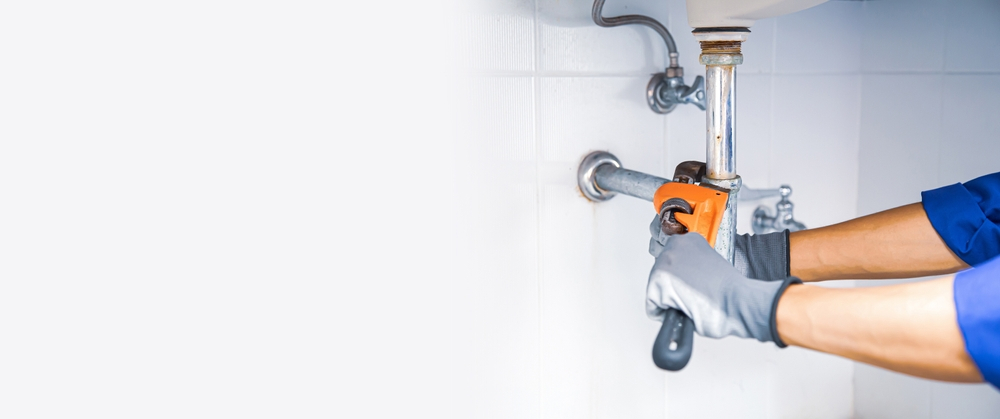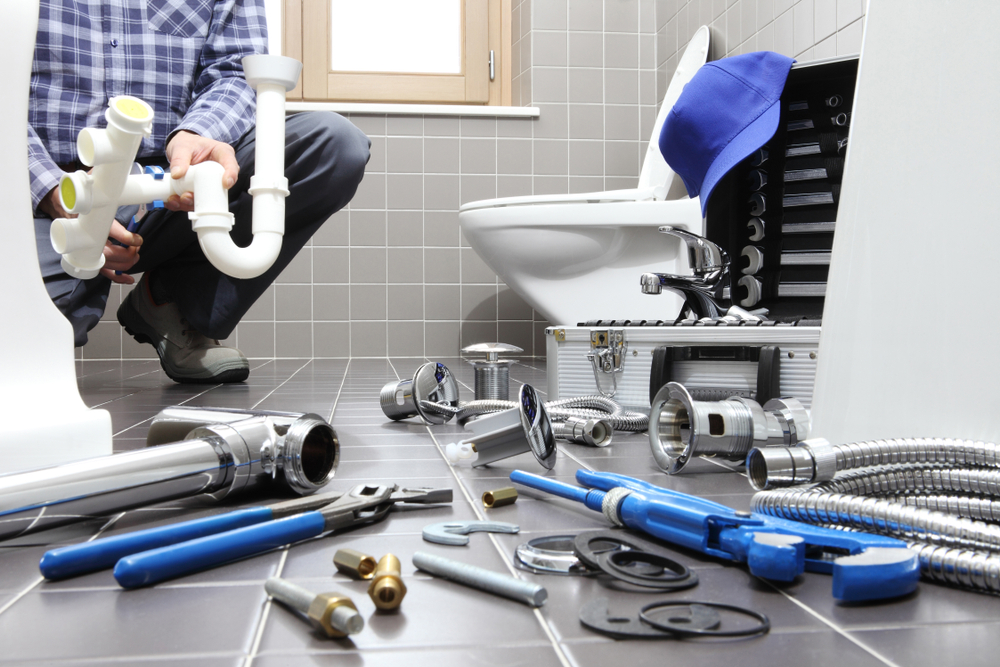Getting the required licenses is absolutely essential when starting a plumbing-related home renovation. Plumbing permits guarantee that your project follows municipal standards for safety and codes. Getting a permission helps you protect your house from possible threats and costly mistakes. It also ensures that the work is under supervision by a licenced specialist.
We will walk you through the process of acquiring a plumbing permit in this methodical tutorial. We will go over every stage in great detail to simplify and clarify the process of how to obtain permits for plumbing projects.
Step 1: Determine the Type of Permit Required
Identifying the correct permission for your particular work is crucial before beginning any plumbing installation. The type of your project will affect the permissions. Here are some typical kinds of plumbing permits:
- Construction Permits: New installations like plumbing systems in recently constructed houses call for this.
- Renovation Permits: You most certainly need a renovation permit if you are building a bathroom or kitchen.
- Repair Permits: Even little jobs like leak repairs or pipe replacements could call for a license.
Every permit category has particular criteria. For example, whereas maintenance permits may call for a description of the problem and suggested solution, building permits frequently need thorough blueprints and diagrams.
How to Find Out Which Permit You Need
Many local government websites include tools to assist homeowners in deciding which permit they require. Usually searching by project kind, the website will offer direction on whether a permit is required. See a local building department or expert plumber for advice on complicated tasks to be sure you are requesting the right permission.

Step 2: Gather Necessary Documents and Information
Gathering the necessary paperwork and information comes next once you know the kind of permission you require. This stage guarantees a seamless application of your permit and helps to avoid unneeded delays.
Required Documents
Often needed records consist of:
- Building plans: Comprehensive plans illustrating the plumbing arrangement.
- Plumbing diagrams: Illustrations of drainage systems and water flow diagrams.
- Contractor information: You will want the license information of the plumber you are employing.
- Material lists: Specifications of the materials you intend to employ, including pipe kinds or fittings.
Importance of Accuracy and Completeness
Turning in accurate, thorough paperwork is absolutely essential. Inaccurate applications could cause delays and call for more information. Verify that your plans satisfy local codes and that all information—including contractor license numbers—is accurate and current.
Tips for Preparation
These suggestions help to simplify this procedure:
- Organize your documents: Stow everything in one location using binders or folders.
- Review local guidelines: Verify your project follows regional plumbing guidelines.
- Consult a professional: Ask a plumber or building department official for guidance if you are confused about some specifics.
Step 3: Complete the Application
It’s time to complete the plumbing permit application now you have all the required documentation. The official ask for authorization to start your project comes in this form.
Key Sections of the Application
Most programs comprise the following areas:
- Project description: Describe your plumbing project succinctly but precisely.
- Estimated cost: Calculate the project’s overall expenses including labor and supplies.
- Location details: Add the precise location the work will be done.
Special Requirements
Sometimes further forms or documentation is required. For instance, you might have to turn in a floodplain management form if your house falls in a flood zone. Several initiatives also call for an environmental impact statement. Always find any specific criteria by consulting your local building department.

Step 4: Submit the Application
It’s time to submit your completed application. Your local jurisdiction may have different submission choices.
Submission Methods
- Online: Many cities these days have web sites where you may apply. Usually faster than turning in person, this approach is practical.
- In Person: Visit your local building department if online submission is not possible or if you would want in-person contacts. Remember to pack all of your paperwork and a payment method for the fees.
- Mail: A few places let you send in your application. If you decide this route, which takes more time, then make plans ahead.
Associated Fees
The extent and expense of the project determine the permit fees. Anticipate paying a percentage of your projected project cost. Usually you can pay in person or online. For your records, save a receipt.
Step 5: Await Approval
You will have to wait for approval after you turned in your application. The complexity of your project and the load of your local building department will affect the approval timeline.
Typical Timeline
Usually, permission acceptance comes with two to six weeks. While larger building projects may take more time because of the necessity for thorough design approvals, simple projects including small repairs could be granted faster.
Potential Delays
Your permit approval can be delayed for several reasons. among these are:
- Incomplete documentation: Missing or erroneous paperwork could cause delays.
- Zoning issues: Should your idea run counter to zoning regulations, more studies could be required.
- Heavy workloads: Particularly in hectic seasons, some building departments have backlogs.
Follow-up
You should follow up with the building department if you haven’t gotten permission following the projected schedule. Most departments let you verify the state of your application by including contact details on their websites.
Step 6: Schedule Inspections
Inspections take front stage in the procedure once you get your permission. Inspections guarantee that the job follows rules on safety.
Importance of Inspections
Ignoring or missing scheduled inspections could result in large fines. Worse, you could have to redo the work, which results in further expenses. Inspections also guard you by confirming that industry standards are followed in the plumbing work.
How to Schedule Inspections
Ask your local building department to set up an inspection. While some ask for a phone call, many have online scheduling tools. Send your permit number and the day the inspection should take place.
What to Expect During an Inspection
The inspector will review the plumbing work to make sure it follows local codes and approved designs. The inspector can need access to several areas of your house, so make sure the space is open and free.
Consequences of Skipping Inspections
Ignoring inspections can have quite negative results. Your work could be deemed illegal without appropriate permits, which would create issues for future renovations or sales of your house. Unchecked work may also not satisfy safety criteria, which may cause possible problems later on.

Step 7: Obtain the Permit
Your plumbing permit will be yours at last once your application is approved and inspections are finished.
How to Pick Up Your Permit
Once your permit is ready for pick-up, most building departments will let you known. You may either download it via an internet portal or, in some situations, get it personally.
Final Steps Before Starting Work
Make sure you finished these last stages before starting any plumbing project:
- Display your permit: Most places need for you to show the permit on-site while work is being done. Inspectors will thus have simple means of confirming that the project has been approved.
- Notify your contractor: Let the plumber you hired know once the permit is obtained. Before the project gets underway, they must view the permit.
Keeping the Permit On-Site
The permit should be kept on-site and easily observable during the process. Ignoring this could cause fines or job stoppages. At every phase of the inspection, the inspector will make sure the permit is correctly displayed.
Conclusion
Getting a plumbing permit could seem difficult, but by using these seven steps you can guarantee a seamless process. Following municipal rules and safeguarding your house depend on your having a permit.
To refresh your memory, the actions consist in:
- Figuring the kind of permission needed.
- Compiling all required paperwork.
- Finishes the application form.
- Sending the application through the suitable avenue.
- Seeking permission and handling any possible delays.
- Setting up necessary inspections.
- At last getting and showing the permit.
These guidelines will help you to be ready for your next house plumbing job. And keep in mind that seeing a skilled plumber will help you to simplify the process even in case of uncertainty.
Plumbing Services CA
https://maps.app.goo.gl/31Yt4rhDrainzNJ4A
(279) 203-0765
https://plumbingservicesca.com/
